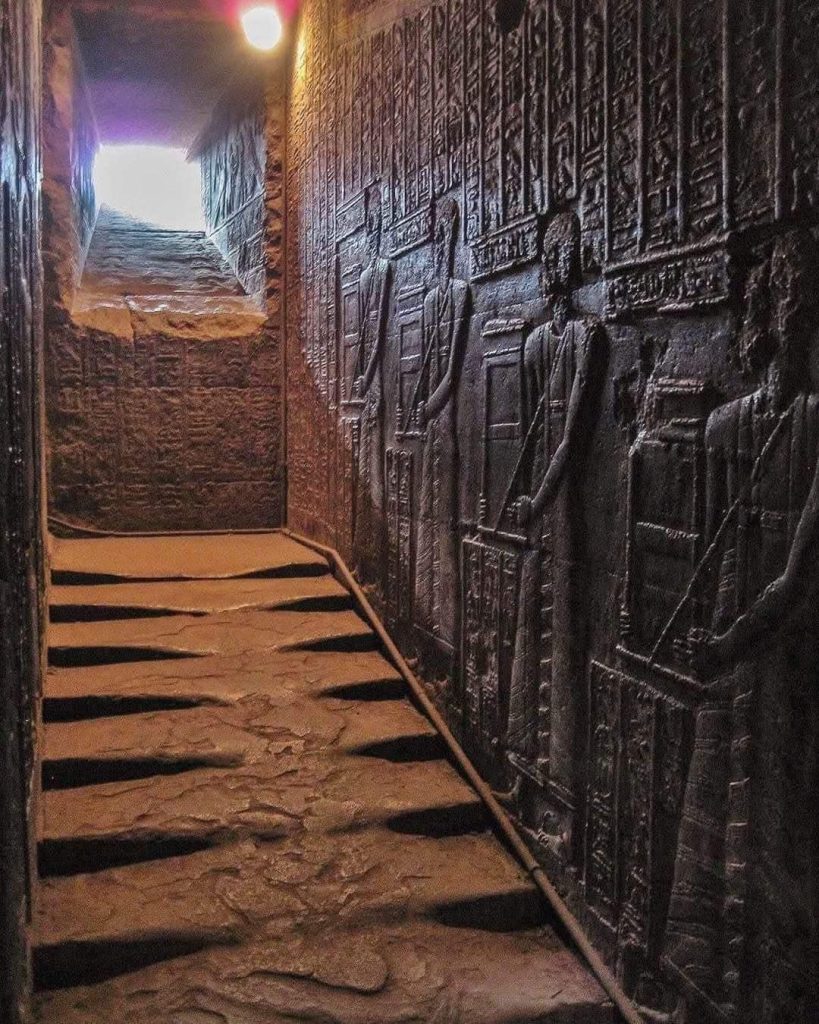As an archaeologist with five decades of experience exploring the hidden depths of ancient civilizations, I have encountered countless wonders and enigmas. Yet, among the most puzzling is a phenomenon nestled deep in the heart of Dendera, Egypt—a site that continues to captivate both the scholarly world and the public imagination. The Temple of Hathor, one of ancient Egypt’s most iconic architectural achievements, not only boasts magnificent design and cultural significance but also conceals a mystery that defies conventional explanation. At the core of this mystery lies a granite staircase that appears to have melted, a feature that challenges everything modern science understands about materials, heat, and ancient construction techniques.

Granite, by its very nature, is an incredibly resilient stone. Known for its durability and resistance to the ravages of time, weather, and even human interference, it has been a favored material for monumental structures throughout history. The granite used in the Temple of Hathor should have stood unyielding for millennia, yet the surface of its staircase tells a different story. Each step shows visible signs of deformation, as if it had been subjected to a level of heat so intense that it partially liquefied the stone. This isn’t just erosion or wear from countless footsteps over centuries—it resembles the aftermath of exposure to extraordinary temperatures, leaving behind an almost surreal, melted appearance.
Scientific analysis of the staircase has only deepened the mystery. Experts initially explored the usual suspects: erosion from natural elements, mechanical damage from human tools, or even the gradual effects of seismic activity. However, none of these explanations fit the evidence. The texture and deformation patterns of the granite suggest it was altered by intense thermal energy—yet, the question remains, where did this heat come from? In a place devoid of modern industrial technology, with no record of fire or volcanic activity affecting the area, the origin of this extreme heat has remained elusive.
Some researchers have floated the idea that an unknown form of energy might have been involved, perhaps something akin to high-frequency radiation or directed energy waves. These theories are not easily accepted in mainstream academia, as they suggest the existence of forces or technologies far beyond what we currently understand. Nevertheless, the lack of a plausible explanation using known science forces open the door to such possibilities. It’s a bold proposition, but one that many believe is worth exploring, particularly given the many unanswered questions surrounding the architectural feats of ancient Egypt.
This leads us to one of the most compelling angles of this mystery—the idea that ancient Egyptians may have had access to advanced technological knowledge now lost to history. It is a notion that challenges the traditional narrative of ancient societies being limited by primitive tools and simple methods. The extraordinary precision with which the pyramids were constructed, the alignment of monuments with celestial bodies, and the use of massive stone blocks transported over vast distances all hint at capabilities that remain unexplained. The melted staircase at the Temple of Hathor could be another piece of this larger puzzle, suggesting that these ancient builders might have possessed techniques for manipulating stone in ways that modern science has yet to replicate or even comprehend.
The Temple of Hathor is not only remarkable for its mysterious staircase but also for its wealth of artistic and scientific achievements. Its walls are adorned with intricate carvings that reflect both religious symbolism and astronomical insight. Most notable is the Dendera Zodiac, a stunning depiction of celestial bodies that showcases the ancient Egyptians’ deep understanding of astronomy. This artifact alone has sparked debates about the extent of their scientific knowledge, indicating that their grasp of the cosmos may have been more advanced than previously acknowledged. The sophistication evident in their astronomical observations lends further credibility to the theory that they might have also excelled in other scientific domains, including material sciences and engineering.
Viewed in this broader context, the staircase is not an isolated anomaly but part of a tapestry of ancient achievements that continue to mystify modern observers. It stands as a symbol of a civilization whose capabilities may have transcended the boundaries we typically associate with antiquity. Whether through lost technology, forgotten methods, or natural phenomena we have yet to understand, the melted staircase confronts us with the humbling reality that history still holds many secrets.
Despite the efforts of countless researchers, historians, and scientists, a definitive answer remains out of reach. Each new examination of the staircase yields more questions than answers, urging us to reexamine our assumptions about the past. Could the ancients have harnessed a form of energy now beyond our grasp? Was there an environmental event that left no other trace but this one? Or are we simply missing a piece of the puzzle that, once found, will render the mystery solvable within the framework of known science?
Until that day comes, the melted staircase at the Temple of Hathor will continue to intrigue and inspire. It serves as a powerful reminder of the limits of our knowledge and the boundless potential of discovery. In a world where we often believe we have charted every frontier, mysteries like this reignite our sense of wonder and challenge us to explore further, to ask deeper questions, and to remain open to the extraordinary. For in the pursuit of understanding, it is often the questions, not the answers, that lead us forward.





